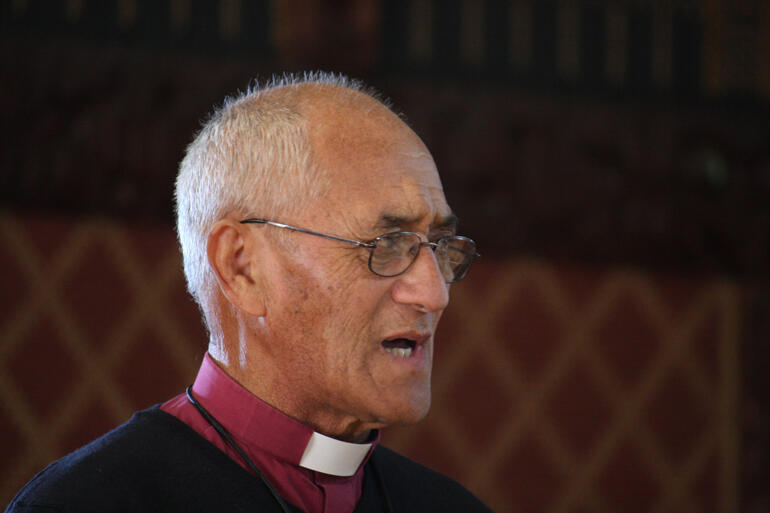
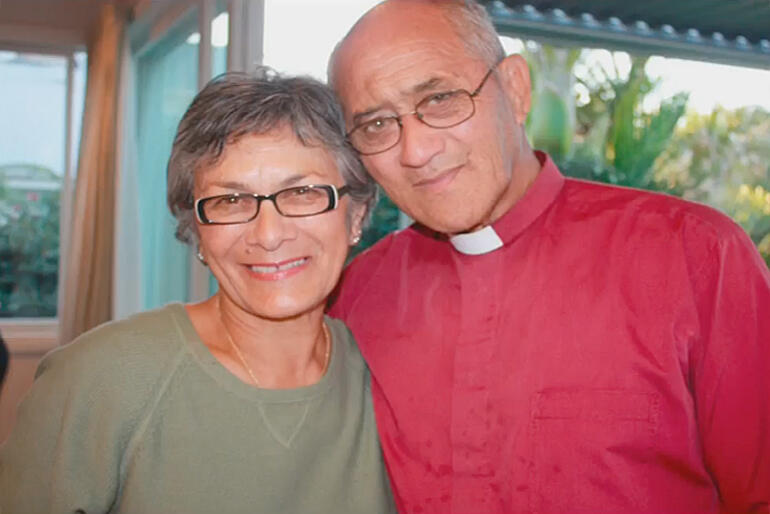
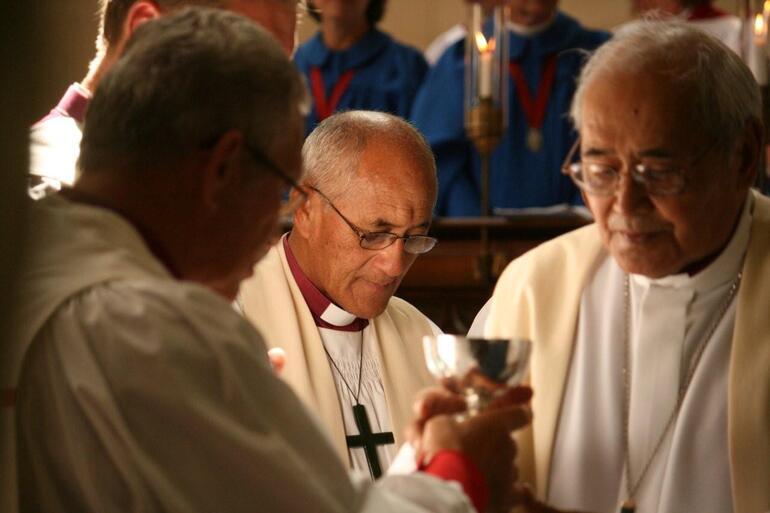
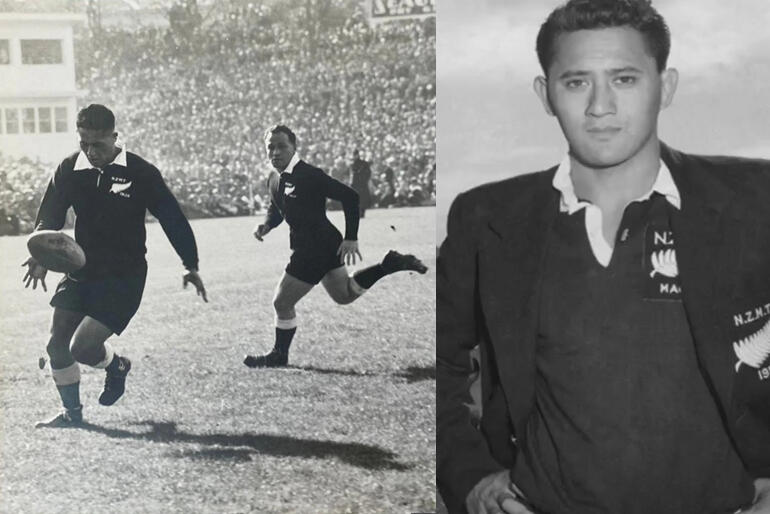
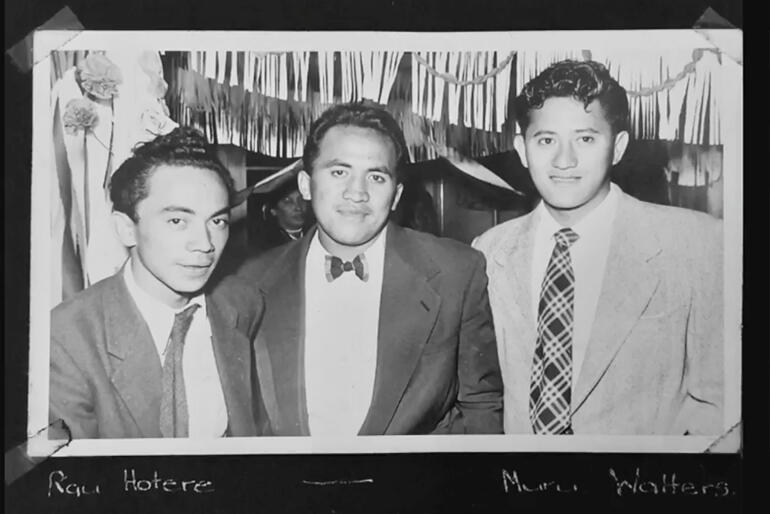
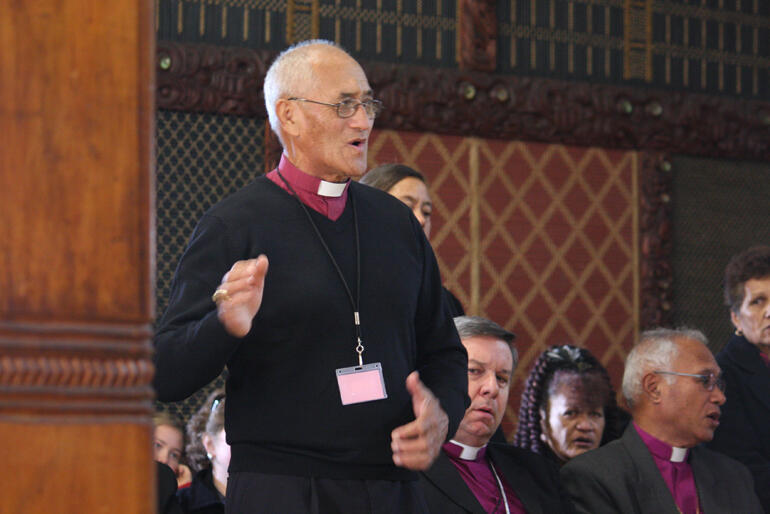
The Rt Rev Muru Walters, who was the first Bishop of Upoko o Te Ika has died aged 90.
Bishop Muru Walters, who died last week, led the Māori Anglican Church across the lower North Island for 26 years between1992-2018. He came to leadership in Te Hāhi Mihinare after a long and illustrious career as an educator, master carver, author, poet, composer, visual artist, broadcaster and Māori All Black.
At Bishop Muru’s funeral on Monday 19 February, which was hosted by Bishop Te Kitohi Pikaahu and Te Mīhana Māori at the Church of the Holy Sepulchre, Archbishop Don Tamihere honoured Muru Walters’ service as a bishop amongst his lifetime of many vocations,
“He was capable of living so many lives. For many of us it would have been enough to be a wonderful teacher, which Muru was. ... it would have been enough to be a Māori All Black, which Muru certainly was, or an incredible and acknowledged artist.
“But he rose also within the ranks of the church to become a bishop among us… and one of the pantheon of incredible Māori leaders.”
Bishop Muru’s son John Walters shared how his father was a renaissance man and an enigma, a person who navigated relationships across all sorts of divides, not only between rugby players and avant garde artists in the 1950s, but between his Māori world and the conservative Pākehā academic establishment, and between the church and his more secular family and society.
“Dad was quite a complex person, he was ahead of his time in many things he did and as such quite controversial.”
“He was, I think, an esoteric thinker, and it was part of his spirituality, and his art and his Māoriness. He thought on a different level, and it usually took other people quite a while to catch up and to appreciate.”
Muru Walters (Te Rarawa, Te Aupōuri) was born in Kaitaia and from the beginning the place he held in his iwi shaped his approach to life.
“Dad was born with natural talent, he had a fierce competitiveness and he was raised as a chief, as a rangatira within his Te Aupouri and Te Rarawa iwi and placed on a pedestal…especially by his mother and sisters who did everything for him.” said John Walters.
“As such, he had huge self-belief about everything he did, which made him great at sports, or kicking a rugby ball, but useless at cooking an egg or making a cup of tea.”
John shared how a deeper common thread had run through his father’s life.
“…overarching all these characteristics, Dad was deeply spiritual and creative, and these qualities were reflected in his art, his kapa haka, his music, and even the way he played his rugby, which was with flair and unpredictability.”
After attending Ahipara Primary School, Muru Walters went to Kaitaia College, before heading to Auckland Teacher’s College where he gained scholarships to train in teaching art and physical education.
In his third year of Teacher’s College in 1955, while already gaining notice as a top rugby player, Muru was surprised to be selected for specialist art training at Dunedin Teacher’s College.
He returned from Dunedin to the North Island, where for the next 15 years he joined a group of Māori art and crafts educators leading a quiet revolution in primary school art education. Muru and his colleagues trained teachers in new arts techniques, both innovating and drawing on contemporary Māori and European arts, first across 47 schools in Northland, then later in Gisborne and across the northern Hawke’s Bay.
As an art educator, he worked with artists such as his best mate Ralph Hotere, as well as Katerina Mataira, then later Para Matchitt, fellow Māori All Black Fred Graham and legendary carver Pineamine (Pine) Taiapa.
Bishop Muru Walters’ career in teaching and the visual arts still left him time to pursue his passion for sport, and in the 1950s he made a name for himself as a brilliant sportsman, rising to the ranks of the Māori All Blacks to play in international test matches before going on to support the game as a rugby coach. In 1958, he married the love of his life, Lorraine, at St Paul’s Anglican Church in Kawakawa.
In 1970, Muru made the southward shift to Dunedin once more, this time with his wife Lorraine and their whānau of four children: John, Raewyn, Robin and Craig . There he took up the post of lecturer in art, and soon went on to establish the Dunedin Teacher’s College’s first Māori Department.
During those fourteen Dunedin years, Muru helped found the city’s Arai Te Uru Māori Culture club, composing haka and waiata for the group and bringing them north to perform at Te Matatini Māori performing arts festival.
On Monday, Archbishop Don recalled how Bishop Muru’s use of haka and waiata continued to shape his ministry in the Church, recounting how sometimes he used a haka to interrupt or shift the conversation in a lagging church meeting.
Also while living in the south, Muru gained an MA in Anthropology from Otago University, where he looked at how differing cultural worldviews change the way human societies view the past; comparing the approach of a Pākehā archeological society in Whakatane, and the approach of Māori hapu from the same region.
Alongside his academic studies, Muru Walters authored a number of books and was a Māori Radio New Zealand broadcaster for twenty years between 1983-2003 when he wrote and commentated for the Kupu Korikori broadcast.
Bishop Kito remembers Muru as a deep thinker, whose disciplined approach to teaching and communication meant he was constantly working to clearly articulate his Christian beliefs.
“He wanted always to be kept accountable as a Christian whose whakapapa was Māori. And as an educator, he was prepared to be held to account for his faith.”
“Muru sought to express his views by submitting papers, offering lectures, contributing articles to theological journals, and writing his sermons and reading them in full.
“As a discipline, he rarely strayed off his text.”
Bishop Muru’s move into leadership in Te Hāhi Mihinare was prompted by his shift to teach at St John’s Theological College in Auckland, where in 1984 he took up a post as a lecturer in Māori Studies.
After four years at St John’s, at the age of 53, Muru Walters was ordained deacon (in 1988), then priest (in 1989) and in the same year went on to become the first Ahorangi of Te Rau Kahikatea, the Māori Theological College at St John’s College in Meadowbank.
It was three years later in 1992, with the emergence of the three tikanga Church that the Rt Rev Muru Walters was consecrated the first Bishop of Te Hui Amorangi o Te Upoko o Te Ika, by the Bishop of Aotearoa, the Rt Rev Whakahuihui Vercoe, alongside the first Bishop of Te Hui Amorangi o Te Tairāwhiti, the Rt Rev Brown Turei, and the first Bishop of Te Hui Amorangi o Tai Tokerau, the Rt Rev Waiohau Te Haara.
Bishop Te Kitohi Pikaahu remembers Muru’s swift elevation as bishop, but also that he was equally quick to rise to the task.
“He really learned the ministry of a bishop landing on the ground on his feet, not unlike the way he played his rugby. Always very well balanced, in equal measure whether on a marae or in a cathedral.”
This week Bishop Kito also gave thanks for Bishop Muru Walters’ pastoral heart,
“He was a bishop, who with Lorraine, knew the power of love that brings forgiveness, reconciliation and redemption.”
Bishop Muru’s contributions to the Anglican Church drew on his diverse skills and interests, following similar lines to his string of diplomas, which as well as covering Education, Teaching and Sports and Recreation now included Theology, Guidance Counselling and Social Services.
Speaking of Bishop Muru’s service to the church, former registrar of Te Hui Amorangi o Te Upoko o Te Ika Anthea Napier shared how she loved the way that both Bishop Muru and Lorraine lived out the words they spoke.
"Bishop did not raise himself above others, he sat with us...stood beside us...and walked alongside us.”
“Our Bishop led our Amorangi with a social justice heart. And he drove social justice.... by allowing room for us to stand and lead. His tautoko was instrumental."
Bishop Muru’s work in social justice and social service also saw him Chair the Church’s Social Justice Commission, and help the Pīhopatanga to develop its Awhi Whānau programme.
For more tributes and stories from Bishop Muru’s life:
Bishop Muru Walters’ funeral at the Church of the Holy Sepulchre is available to view in full here.






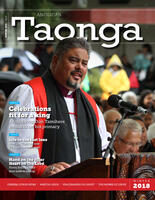
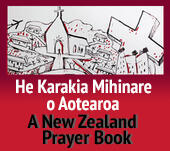



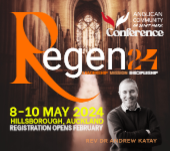





Comments
Log in or create a user account to comment.